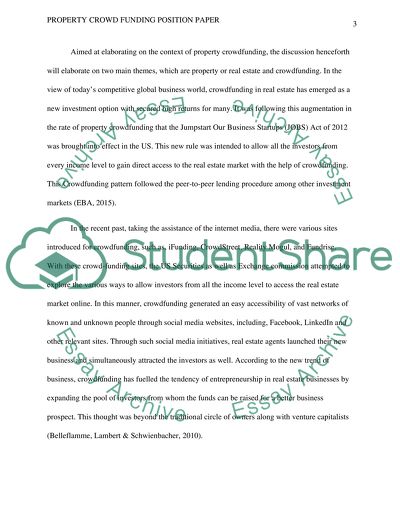Cite this document
(“Property Crowdfunding Position Paper Essay Example | Topics and Well Written Essays - 5000 words”, n.d.)
Property Crowdfunding Position Paper Essay Example | Topics and Well Written Essays - 5000 words. Retrieved from https://studentshare.org/law/1695473-property-crowdfunding-position-paper
Property Crowdfunding Position Paper Essay Example | Topics and Well Written Essays - 5000 words. Retrieved from https://studentshare.org/law/1695473-property-crowdfunding-position-paper
(Property Crowdfunding Position Paper Essay Example | Topics and Well Written Essays - 5000 Words)
Property Crowdfunding Position Paper Essay Example | Topics and Well Written Essays - 5000 Words. https://studentshare.org/law/1695473-property-crowdfunding-position-paper.
Property Crowdfunding Position Paper Essay Example | Topics and Well Written Essays - 5000 Words. https://studentshare.org/law/1695473-property-crowdfunding-position-paper.
“Property Crowdfunding Position Paper Essay Example | Topics and Well Written Essays - 5000 Words”, n.d. https://studentshare.org/law/1695473-property-crowdfunding-position-paper.


